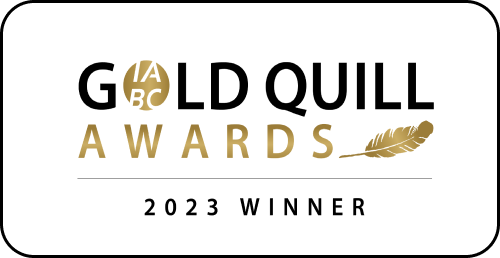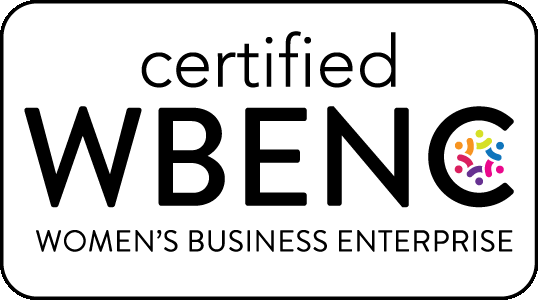Meet veteran DE&I leader and disability advocate Jim Sinocchi
By now, the business case for workforce diversity, equity, and inclusion (DE&I) is clear, and DE&I is increasingly critical for recruiting and retaining workers.
- A 2020 McKinsey study shows that companies ranking highest in workforce diversity were 36% more profitable in 2019 than those with the least diverse workforces.
- Seventy-six percent of millennials responding to the 2022 EY US Generation Survey said they’d leave an employer who did not offer DE&I initiatives.
But what does DE&I look like from the inside?
We asked Jim Sinocchi, who has spent more than 40 years communicating about and advocating for DE&I, with a particular focus on the disability community.
How have DE&I issues changed over the years? What’s remained constant?
In many ways, DE&I is still trying to find itself. The world is more aware of DE&I issues and benefits, and people are becoming more inclusive in their thinking, but we continue to face challenges, which differ depending on the constituency. Blacks, Women, Hispanics, and Veterans – the traditional DE&I constituencies – have made major steps forward. But we have more work to do for other groups, including the disability and LGBTQ communities.
Leaders also think about what DE&I means from their personal perspectives – how to engage in discussions, the appropriate vocabulary, the right protocols – as well as trying to define what equity and inclusion mean today.
So, the picture is blurry. DE&I isn’t just one thing – it never has been – and it’s not as easy a journey as we sometimes think it is. There’s a lot going on, and we’re not at a steady state just yet.
You’ve worked for two major corporations – IBM and JPMorgan Chase. In your experience, how do senior leaders think about DE&I?
Senior leaders have been very good at embracing DE&I issues and challenges, but not all of them are comfortable with the journey that still needs to be taken. That’s where advocates and education will always be needed – to help leaders better understand what their employees need to perform at their very best, on a level playing field with their peers.
How you recruit, define business outcomes, and meet regulatory compliance needs – all of these contribute to hiring the best candidates for a job, regardless of race, color, orientation, gender, or disability.
I’m part of the disability community, and I can tell you that while we are acknowledged as part of DE&I, we are trailing when it comes to hiring, leadership, and access to capital. When we set out to change that at IBM and JPMorgan Chase, we made it clear – with a superior communications and media plan, and leadership at the top of the business – that we were looking for talent, including talent from the disability community.
We shared our strategy with anyone who asked. We wanted to help change the marketplace for people who are perceived as different. We focused on four areas:
- Attitude – Embracing a variety of people who are different – across the organization.
- Accommodations – Ensuring that people with different disabilities have the tools they need to perform their jobs – for example, captioning, screen readers, and ramps.
- Accessibility – Providing access to both physical and technology infrastructures, including real estate modifications.
- Assimilation – Fostering a culture of inclusion in an organization where people share values, in pursuit of a common goal.
During my tenure at JPMC, we saw increased interest in job applications from people with disabilities – and we hired many of them based on their qualifications. Of course, our affirmative action policies were already in play, but the firm promoted its new Office of Disability Inclusion and its interest in hiring qualified people with disabilities. And guess what, it worked!
So, progress and success are possible, but it takes resources, talent, leadership support, and collaboration across an organization – including communications, technology, real estate, and legal – to embrace inclusion and put it into practice. I’m optimistic, but I also know that some people remain biased or uncomfortable about working with people who are different. That bias may never go away, but that doesn’t mean we stop trying.
What advice do you have for those of us who communicate about DE&I issues?
Begin with fundamental communication principles: Know your audience. Communicate in a way that engages them. Encourage dialog – without preaching or forcing ideas on people. If you are representing a particular group, say, “Let me tell you a story about this community.”
If you’re communicating one-on-one with a person from a marginalized group, start by being cordial – say, “Hello, how are you?” Ask about their work, their interests, and their point of view. When I talk about disability inclusion, I try to make it clear that the people in this community aren’t just disabled – they’re parents, wives, husbands, and children. Yes, there are things they can’t do, but they also have something to contribute; their lives and values didn’t stop when they became disabled.
And it’s important to recognize where people are in their DE&I journey. We’re living in a time of increased controversy, evolving values, new gender identity dynamics, and hyper-charged social media. Some people don’t understand what’s changing because things are moving quickly. So, we need to listen and try to meet people where they are. Communicate in an authentic, thoughtful, balanced way. All of us are learning, and progress takes time.
What can communicators do to be more effective DE&I partners and advocates?
Understand the issues. Educate ourselves.
- Talk with DE&I leaders within companies, find out what’s working and not working.
- Go to communications seminars and events that feature DE&I topics.
- Seek out experts – reporters, researchers, and educators who study and cover DE&I issues. Where are they getting their information? How do they get a good story?
- Speak to professionals in each constituency, understand their common goals and unique challenges.
- Read widely and with a critical eye. In today’s media environment, it’s important to recognize when a reporter or publication – even an academic researcher – has an agenda or a bias. If you’re only looking at one media outlet or talking to one expert, you may not be getting the full story.
As communicators, it’s our job to get the facts, be accurate and be ready to accept a new perspective or paradigm. We can also draw distinctions and make connections. I’ve done this with my DE&I colleagues, challenging them to recognize the disabled people in their own constituencies. In every DE&I group – Blacks, Women, LGBTQ, Asians, you name it – somewhere around 20 percent are disabled, something most of my colleagues didn’t realize. So, communicators can help get people out of their comfort zone and learn to think more broadly.
Any final thoughts?
I’m extremely grateful to have been able to do the work I’ve done. My DE&I strategy came from lived experience, as an able-bodied person who became totally paralyzed early in my IBM career. I was fortunate to work for two major companies that were committed to diversity and inclusion. I knew people were watching what we did, and I had the opportunity to make a difference.
Over the years, I’ve come to think of myself as a champion for humanity. Getting diverse groups of people hired and promoted into leadership positions is important, but it’s bigger than that. It’s about lifting a “global disability community” that’s been disenfranchised for many years and making the world a better place for everyone.


